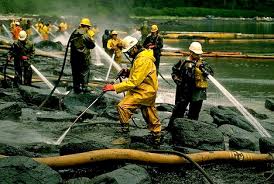 BP's plan to protect workers fighting the massive oil spill in the Gulf, which the Coast Guard approved on May 25, exposes them to higher levels of toxic chemicals than generally accepted practices permit.
BP's plan to protect workers fighting the massive oil spill in the Gulf, which the Coast Guard approved on May 25, exposes them to higher levels of toxic chemicals than generally accepted practices permit.
As a result, BP isn't required to give workers respirators, to evacuate them from danger zones, or to take other precautions until conditions are more dangerous. The looser standards are due in part to federal regulations that don't specify safety thresholds for volatile organic compounds, or VOCs — the principal toxins that threaten the health of spill response workers, experts said.
BP's plan also fails to address the use of more than 1 million gallons of dispersants so far in the cleanup.
"This plan is not workable and offers a false sense of security," said Eileen Senn, a former state and federal health and safety official for more than 40 years. "It gives the impression that you can write a procedure to dodge chemical bullets that are coming at you constantly."
Critics are questioning the quality of the company's plan as a growing number of oil spill workers are becoming sick. The illnesses have sparked a debate about whether the Obama administration should be pushing BP to take more stringent precautions or even wrest control of the company's health and safety response.
More than 24,400 people are working on the response to the spill. Of the 50 workers who have reported becoming ill in Louisiana, most of their symptoms cleared up quickly, but a majority of the workers think the dispersants were to blame.





 Forecasters say the first snow storm of the season to take aim at major Northeast cities...
Forecasters say the first snow storm of the season to take aim at major Northeast cities... A 7.0 magnitude earthquake has rocked Alaska on Saturday, Dec. 6, according to the United States...
A 7.0 magnitude earthquake has rocked Alaska on Saturday, Dec. 6, according to the United States... Tens of thousands of residents in western Washington could face evacuation orders when another round of...
Tens of thousands of residents in western Washington could face evacuation orders when another round of... President Trump on Wednesday weakened vehicle mileage rules for the auto industry, loosening pollution restrictions.The proposal...
President Trump on Wednesday weakened vehicle mileage rules for the auto industry, loosening pollution restrictions.The proposal...






























